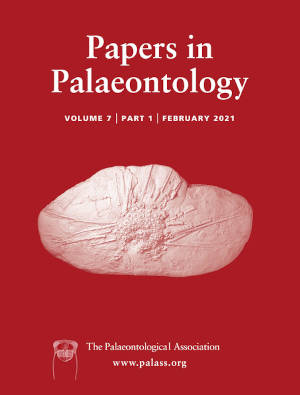Reg. Charity No. 1168330

The palaeobiogeography of the alveolinoid Borelis species reveals the evolutionary patterns leading to the two extant representatives, which occur in shallow‐water tropical carbonate, coral reef‐related settings. Type material and new material of fossil Borelis species, along with Recent specimens were studied to assess their taxonomic status, species circumscriptions (based on proloculus size, occurrence of Y‐shaped septula, and the index of elongation), palaeobiogeography and evolutionary dynamics. The species dealt with here are known from exclusively fossil (B. pygmaea, B. inflata, B. philippinensis, B. melo, B. curdica), and from fossil and modern (B. pulchra, B. schlumbergeri) specimens. For the first time, fossil and Recent Borelis specimens are illustrated via micro‐computed tomography scanning images. Depending on the occurrence of Y‐shaped septula, two lineages are distinguished. Deriving from the middle–upper Eocene Borelis vonderschmitti, the first lineage includes B. inflata, B. pulchra and B. pygmaea, lacking Y‐shaped septula. The first species bearing Y‐shaped septula is the Rupelian B. philippinensis of the western Indo‐Pacific. The westward migrants of B. philippinensis into the Mediterranean gave rise to B. melo (Aquitanian–Messinian) and B. curdica (Burdigalian–Tortonian). These two species became isolated from the Indo‐Pacific by the Langhian eastern closure of the Mediterranean basin and disappeared during the Messinian Salinity Crisis. Since the Tortonian, B. schlumbergeri, which descended from B. philippinensis, has inhabited the Indo‐Pacific along with B. pulchra. From the central Pacific Ocean, B. pulchra reached the Caribbean area before the early Piacenzian closure of the Central America seaway.